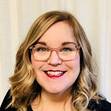Amy Sue Nathan's Blog: Women's Fiction Writers, page 33
February 25, 2014
Three Turning Points and a Tremendous Book Giveaway
 Two weeks ago I turned in my second novel, FINDING IZZY LANE, to my editor at St. Martin’s Press! I’m pleased with the book and eager to hunker down with edits and get this novel out to readers, hopefully Spring 2015. But this is publishing folks, so of course, that could mean winter or summer or fall! I’ll write more about the book as time goes on, but for now, here’s the lowdown on Izzy!
Two weeks ago I turned in my second novel, FINDING IZZY LANE, to my editor at St. Martin’s Press! I’m pleased with the book and eager to hunker down with edits and get this novel out to readers, hopefully Spring 2015. But this is publishing folks, so of course, that could mean winter or summer or fall! I’ll write more about the book as time goes on, but for now, here’s the lowdown on Izzy!
Lies, love, and the internet collide when divorced mom Izzy Lane moonlights as a dating expert for a popular website, even though she hasn’t dated in years. In real life, Izzy has moved back to her childhood home with her five-year-old son, is still hung-up on her unemployed ex-husband, and spends weekends hanging out with an eighty-five-year-old neighbor who harbors secrets of her own. When Izzy discovers some lies can last a lifetime, she must decide if telling the truth to avoid that fate, is worth risking the friendships, love, and job she’s come to count on.
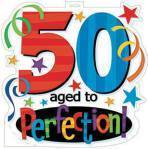 Today, I turn FIFTY! Yes, that’s 5-0 and I’m fine with it! I bought myself a new pair of earrings and matching necklace from Etsy (I heart Etsy). Last weekend my daughter and my son came home from their respective colleges just to celebrate with me. I’ve had, and am having, celebrations with friends. In early March I’ll celebrate with my immediate family and a few cherished (I won’t say “old”) friends during a weekend away. Now, if random strangers would be kind enough to say I don’t look old enough to have a 22-year-old son graduating from college, that’d be super. I may be fine with fifty, but I’m not above a little flattery.
Today, I turn FIFTY! Yes, that’s 5-0 and I’m fine with it! I bought myself a new pair of earrings and matching necklace from Etsy (I heart Etsy). Last weekend my daughter and my son came home from their respective colleges just to celebrate with me. I’ve had, and am having, celebrations with friends. In early March I’ll celebrate with my immediate family and a few cherished (I won’t say “old”) friends during a weekend away. Now, if random strangers would be kind enough to say I don’t look old enough to have a 22-year-old son graduating from college, that’d be super. I may be fine with fifty, but I’m not above a little flattery.
 In March, Women’s Fiction Writers turns THREE! I’d already been blogging for five years, but it took me six months to get up the gumption to start Women’s Fiction Writers in 2011. Then, WFW took on a life of its own. Thanks to all the authors who’ve participated and all the writers and readers who welcome it into their inbox and swing by once or twice a week. In 2013, WFW had over 37,000 views from over 137 countries. That, my friends, is another reason to celebrate. Want to see all the authors who’ve been here (and some to come)? Click here.
In March, Women’s Fiction Writers turns THREE! I’d already been blogging for five years, but it took me six months to get up the gumption to start Women’s Fiction Writers in 2011. Then, WFW took on a life of its own. Thanks to all the authors who’ve participated and all the writers and readers who welcome it into their inbox and swing by once or twice a week. In 2013, WFW had over 37,000 views from over 137 countries. That, my friends, is another reason to celebrate. Want to see all the authors who’ve been here (and some to come)? Click here.
The Tremendous Book Giveaway
 In honor of these three turning points, and because I don’t yet have my new book to give away—as a thank you for hanging out here, and supporting me in all kinds of awesome ways, just leave a comment and 13 of you can each win one of 13 books by 11 amazing authors. You have twenty four hours to enter, and prizes will only be mailed within the United States. Tweet it or FB the link and add another comment for a double or triple entry (but that’s it, tweet it a gazillion time, still only one Twitter entry). You can also *like* my FB page and sign up for my newsletter (but if you’ve already signed up, please don’t sign up again, just tell me you’ve done so) to enter as well. Winners will be chosen and books awarded randomly (unless there’s one you’re dying to have, make a note of it, and if you win, I’ll do my best!). You can only win once. If you can’t be reached via email someone else will be chosen right away. Winners will be announced on the blog and emailed by Friday morning.
In honor of these three turning points, and because I don’t yet have my new book to give away—as a thank you for hanging out here, and supporting me in all kinds of awesome ways, just leave a comment and 13 of you can each win one of 13 books by 11 amazing authors. You have twenty four hours to enter, and prizes will only be mailed within the United States. Tweet it or FB the link and add another comment for a double or triple entry (but that’s it, tweet it a gazillion time, still only one Twitter entry). You can also *like* my FB page and sign up for my newsletter (but if you’ve already signed up, please don’t sign up again, just tell me you’ve done so) to enter as well. Winners will be chosen and books awarded randomly (unless there’s one you’re dying to have, make a note of it, and if you win, I’ll do my best!). You can only win once. If you can’t be reached via email someone else will be chosen right away. Winners will be announced on the blog and emailed by Friday morning.
It’s easy. Leave a comment, tweet, like, or click to win a book. Good luck!
Amy xo
Click to view slideshow.


February 20, 2014
Author Susan Meissner Talks About Women’s Fiction And What It Means To Be An Author Of Women’s Fiction
 Today on Women’s Fiction Writers we have with us Susan Meissner, who has published more than a dozen novels! Of course I wanted to ask her the most important questions I could think of. Then, below, you’re treated to a Q&A about her latest novel, A FALLOF MARIGOLDS.
Today on Women’s Fiction Writers we have with us Susan Meissner, who has published more than a dozen novels! Of course I wanted to ask her the most important questions I could think of. Then, below, you’re treated to a Q&A about her latest novel, A FALLOF MARIGOLDS.
In answering one of my questions, Susan says that the goal of the author is “to satisfy and to be remembered.” What is your goal as an author? She also states that Women’s Fiction “isn’t obligated to provide a happily ever after.” She’s singin’ my song with that one! (I like to write hopeful open endings.) What do you think about THE END in Women’s Fiction?
Please welcome Susan Meissner to Women’s Fiction Writers!
Amy xo
Author Susan Meissner Talks About Women’s Fiction And What It Means To Be An Author Of Women’s Fiction
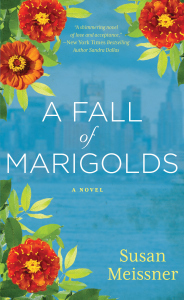 Amy: What is your definition of women’s fiction?
Amy: What is your definition of women’s fiction?
Susan: From my experience as a multi-published author in that genre, I believe what makes a novel a decidedly female read is a gray area, really. You usually don’t hear gals describe what they read as ‘women’s fiction’ and you won’t often find books shelved that way in Barnes & Noble. It’s more a label we writers use to describe what we write rather than what someone else reads. I think story lines that female readers are drawn to most are those that deal with human relationships, especially those found in the family, and women readers are all about relationships. Women’s fiction usually features a female character in the leading role, or at least a character that a woman can care about pretty much from the get-go.
Amy: What advice would you give to aspiring authors of women’s fiction?
Susan: Your goal as the author is to satisfy and be remembered. The female reader who reads women’s fiction usually wants a book that makes her think. She wants a book that she can discuss with other women at the water cooler or on the playground or at her book club. She wants a book that invites and even incites dialogue. When you can talk about fictional situations that made you ponder, you find yourself making sense of your own very real, nonfictional world. Fiction has that power. Women readers know this. For many women, novel-reading is only part escape — the other half is laboratory. I don’t think women’s fiction is obligated to offer happily-ever-after endings, but the ending must be one that satisfies. If you will remember, in The Notebook, Nicholas Sparks didn’t heal or save anyone, but the ending is nonetheless pleasing.
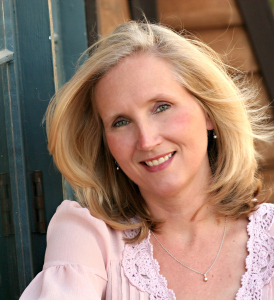 Susan Meissner is a multi-published author, speaker and writing workshop leader with a background in community journalism. Her novels include The Shape of Mercy, named by Publishers Weekly as one of the 100 Best Novels of 2008. She is a pastor’s wife and a mother of four young adults. When she’s not writing, Susan writes small group curriculum for her San Diego church. Visit Susan at her website: http://www.susanmeissner.com on Twitter at @SusanMeissner or at http://www.facebook.com/susan.meissner
Susan Meissner is a multi-published author, speaker and writing workshop leader with a background in community journalism. Her novels include The Shape of Mercy, named by Publishers Weekly as one of the 100 Best Novels of 2008. She is a pastor’s wife and a mother of four young adults. When she’s not writing, Susan writes small group curriculum for her San Diego church. Visit Susan at her website: http://www.susanmeissner.com on Twitter at @SusanMeissner or at http://www.facebook.com/susan.meissner
The following Q&A was generously provided by Susan, and I’m sure you’ll enjoy reading about A FALL OF MARIGOLDS!
Q&A: SUSAN MEISSNER, AUTHOR, A FALL OF MARIGOLDS
Susan, tell us where the idea for this story came from.
I’ve long been a history junkie, especially with regard to historical events that involve ordinary people facing extraordinary circumstances. A couple years ago I viewed a documentary by author and filmmaker Lorie Conway called Forgotten Ellis Island; a hauntingly poignant exposé on the section of Ellis Island no one really has heard much about; its hospital. The two man-made islands that make up the hospital buildings haven’t been used in decades and are falling into ruins, a sad predicament the documentary aptly addresses. The documentary’s images of the rooms where the sick of a hundred nations waited to be made well stayed with me. I knew there were a thousand stories pressed into those walls of immigrants who were just a stone’s throw from a new life in America. They were so close they could almost taste it. But unless they could be cured of whatever disease they’d arrived with, they would never set foot on her shores. Ellis Island hospital was the ultimate in-between place – it lay between what was and what could be. A great place to set a story
What is the story about, in a nutshell?
The book is about two women who never meet as they are separated by a century. One woman, Taryn, is a 9/11 widow and single mother who is about to mark the tenth anniversary of her husband’s passing. The other is a nurse, Clara, who witnessed the tragic death of the man she loved in the Triangle Shirtwaist Fire in Manhattan in 1911.In her sorrow, Clara imposes on herself an exile of sorts; she takes a post at the hospital on Ellis Island so that she can hover in an in-between place while she wrestles with her grief. She meets an immigrant who wears the scarf of the wife he lost crossing the Atlantic, a scarf patterned in marigolds. The scarf becomes emblematic of the beauty and risk inherent in loving people, and it eventually finds it way to Taryn one hundred years later on the morning a plane crashes into the North Tower of the World Trade Center. The story is about the resiliency of love, and the notion that the weight of the world is made more bearable because of it, even though it exposes us to the risk of loss.
Why a scarf of marigolds? What is their significance?
Marigolds aren’t like most other flowers. They aren’t beautiful and fragrant. You don’t see them in bridal bouquets or prom corsages or funeral sprays. They don’t come in gentle colors like pink and lavender and baby blue. Marigolds are hearty, pungent and brassy. They are able to bloom in the autumn months, well past the point when many other flowers can’t. In that respect, I see marigolds as being symbolic of the strength of the human spirit to risk loving again after loss. Because, face it. We live in a messy world. Yet it’s the only one we’ve got. We either love here or we don’t. The title of the book has a sort of double-meaning. Both the historical and contemporary story take place primarily in the autumn. Secondarily, when Clara sees the scarf for the first time, dangling from an immigrant’s shoulders as he enters the hospital building, she sees the floral pattern in the threads, notes how similar they are to the flames she saw in the fire that changed everything for her, and she describes the cascading blooms woven into the scarf as “a fall of marigolds.”
What led you to dovetail the Triangle Shirtwaist Fire of 1911 with 9/11?
When I first began pulling at story threads, my first instinct was to tell a story about an immigrant struggling to remain hopeful as an unwilling patient at Ellis Island hospital. But the more I toyed with whose story this was, the more I saw instead a young nurse, posting herself to a place where every disease known and unknown showed up. It was a place like no other; a waiting place – a place where the dozens of languages spoken added to the unnatural homelessness of it. Why was she here? Why did she choose this post? Why did she refuse to get on the ferry on Saturday nights to reconnect with the real world? What kind of person would send herself to Ellis not just to work, but to live? Someone who needed a place to hover suspended. I knew something catastrophic had to happen to her to make her run to Ellis for cover. As I began researching possible scenarios, I came across the Triangle Shirtwaist Fire, which up until 9/11 was arguably the worst urban disaster to befall Manhattan. There were similarities between that fire and 9/11, including the tragic fact that many trapped workers jumped to their deaths rather than perish in the flames. For every person lost in disasters such as these, there is always his or her individual story, and the stories of those who loved them. I wanted to imagine two of those stories.
One important plot element is the moral dilemma Clara faces when she discovers something about the dead immigrant’s wife that he does not know. What led you to include this story thread?
A good story has to have tension; there has to be some kind of force tightening the screws, forcing the characters to react and respond. The main character of any novel wants something and the tension increases whenever what she wants eludes her. Clara is desperate to keep love golden, perfect in her mind, and without sharp edges. This moral dilemma I impose on her forces her to truly ponder what she thinks she wants. Is love really at its grandest when there are no sharp edges to it all? I don’t think so. I think to love at its fullest means we might get hurt. Probably will. But that doesn’t mean it’s not worth sharing, giving, and having. I include a line in the book that sums it up for me. “Love was both the softest edge and the sharpest edge of what made life real.” I think if we’re honest with ourselves we don’t want to settle for love being just as safe as “like.” Clara wrestles with what to do with her knowledge because she doesn’t want the beauty of love to somehow be tarnished; even it’s tarnished by truth.
Your last few novels have had historical components interwoven within a contemporary story. Why do you prefer that kind of story construction?
I think living in Europe for five years awakened my love for history. It’s like it was always there but my time spent overseas just woke it up. When I think back to the subjects I did well in and that came easy to me in high school and college, it was always English and history, never math or science. I appreciate the artistry of math and the complexity of science, but neither subject comes easy to me. History has the word “story” in it. That’s what it is. It’s the story of everyone and everything. How could I not love it? Study history and you learn very quickly what we value as people; what we love, what we fear, what we hate, what we are willing die for. History shows us where we’ve been and usually has lessons for us to help us chart where we’re going.
Are you working on anything new at the moment?
My next book is set entirely in England, mostly during The London Blitz. My main character starts out as a young, aspiring bridal gown designer evacuated to the countryside with her seven-year-old sister in the summer of 1940. Though only fifteen, Emmy is on the eve of being made an apprentice to a renowned costumer and she resents her single mother’s decision to send her away. She sneaks back to London – with her sister in tow – several months later but the two become separated when the Luftwaffe begins its terrible and deadly attack on the East End on the first night of the Blitz. War has a way of separating from us what we most value, and often shows how little we realized that value. I have always found the evacuation of London’s children to the countryside – some for the entire duration of the war – utterly compelling. How hard it must have been for those parents and their children. I went on a research trip to the U.K. in the fall of 2013 and I spoke with many individuals who were children during the war; some were separated from their parents, some were bombed out of their homes, some slept night after night in underground Tube stations, some watched in fascination as children from the city came to their towns and villages to live with them. This book explores issues of loss and longing, but also the bonds of sisters, and always, the power of love.
Where can readers connect with you?
You can find me at www.susanmeissner.com and on Facebook at my Author page, Susan .Meissner, and on Twitter at SusanMeissner. I blog at susanmeissner.com. I also send out a newsletter via email four times a year. You can sign up for it on my website. I love connecting with readers! You are the reason I write.


February 18, 2014
Guest Post: A Tale As Old As Time—Sexism and Books By And About Women by Author Katie O’Rourke
 It’s a tale as old as—well for me, this blog. Overall, books written by women are not given the same attention as books written by men. I’ll be honest, it wasn’t something I paid attention to until I was on my quest to become a published author. I’ve always read books by men and women. Mostly women. When I tried to decide (in that “you must know what you write before you query” frenzy) what I was writing, the term women’s fiction made sense. I mostly write about women. Likely about topics of interest to women. Now, I know that men have read The Glass Wives and enjoyed it, appreciated it. Even men not related to me.
It’s a tale as old as—well for me, this blog. Overall, books written by women are not given the same attention as books written by men. I’ll be honest, it wasn’t something I paid attention to until I was on my quest to become a published author. I’ve always read books by men and women. Mostly women. When I tried to decide (in that “you must know what you write before you query” frenzy) what I was writing, the term women’s fiction made sense. I mostly write about women. Likely about topics of interest to women. Now, I know that men have read The Glass Wives and enjoyed it, appreciated it. Even men not related to me.
Obviously, I don’t mind the term women’s fiction. I always used it as a way to describe what I write until I started also using the term book club fiction. I never saw the term as an emblem of righteous indignation. Yet, the facts that author Katie O’Rourke brings to light below, are troubling. And the fact that books of all kinds by women (women don’t just write women’s fiction, shocking, I know!) don’t get the reviews and acclaim—or are even considered for it—is troubling.
Many thanks to Katie O’Rourke for wanting to share her thoughts here. Please share yours in the comments.
Amy xo
Sexism and Books By and About Women
 Many female authors bristle at the label “women’s fiction” for the same reason Wikipedia users were upset last year when all novels written by women were segregated from those writers whose gender was deemed irrelevant to their writing: men. Why isn’t there a ‘men’s fiction’? Because men have determined that to be the default.
Many female authors bristle at the label “women’s fiction” for the same reason Wikipedia users were upset last year when all novels written by women were segregated from those writers whose gender was deemed irrelevant to their writing: men. Why isn’t there a ‘men’s fiction’? Because men have determined that to be the default.
In one of my favorite reviews of Sue Miller, she’s described as writing about “families and marriages, infidelity and divorce — what we call ‘literary fiction’ when men write about those things.”
Though women’s writing doesn’t get the same respect, the reason it doesn’t hurt sales is that most book buyers are women, a fact that makes the predominance of male reviewers even more bizarre.
Whenever I read an article about sexism in contemporary literature, I’m frustrated by what seems to be missing from the conversation. To me, all these issues are connected and they have to do with the way girls and boys are taught how to read.
During the four years of my public high school education, I was assigned close to twenty novels. Only two of them were written by women: Pride and Prejudice and To Kill a Mockingbird. A British lady from the 1800s and a ten year old American girl from the 1930s are representing all of female human experience. It’s a heavy burden.
The books I was assigned in school are the same books my parents were assigned, the same books they’re assigning today. I’ve been told this isn’t sexist; it’s a product of the sexism of the past. Classic literature must stand the test of time.
Certainly, there were fewer women being published in the 1900s and I don’t suggest we whitewash history to pretend otherwise. But when we create a mandatory reading list for children, why are we focusing on this time period, perpetuating the ideas of white men whose sexism can be forgiven? Doesn’t time march onward? Haven’t there been any great novels written in the last three generations?
As an adult, I read an article that quotes F. Scott Fitzgerald as saying: “Women learn best not from books or from their own dreams but from reality and from contact with first-class men.” It colored my impression of his female characters.
Did you read The Great Gatsby in high school? Is it possible that every American to pass through a public school in the last fifty years has been forced to read the same book, absorbing the perspective of this old-school misogynist because critics have decide it is one of the “great American novels”?
And, can a woman write the great American novel? Salon’s Lauren Miller writes: “Men are allowed to stand for the entirety of a national identity or for humanity itself, but women are only supposed to stand for womanhood, if in various flavors.”
Imagine if The Great Gatsby had focused on Daisy instead. Could it have been a story representative of what it was like to be an American in the 20s, or would it have only been representative of what it was like to be an American woman in the 20s?
When a subject is written by a man, it’s considered universal because men see stories about men as universal and men make these definitions. Because assigned reading is so heavily male, women have been taught to find universal themes in books written by men and about men. The opposite is not true. Men have not been required to find universal themes in books written by women, about women. They have rarely even been required to read such books.
Out of curiosity, I tracked down the current reading list for my public high school. The freshman and sophomore reading remains unchanged: eight titles (including Gatsby!), only one written by a woman. The junior reading list is a choice among 100 books, five of which were written by women. Of the fifty-five books on the senior reading list, there are six books and ten short stories by women. It’s unclear whether the reading choice is made by the students or the teacher, so I’m still not sure boys are being assigned more female authors than they were twenty years ago.
Beyond the obvious charge of sexism, the disadvantage this presents to female students, I’d suggest a disservice is being done to male students as well. I think reading habits are developed early in life, and this may have something to do with why women are better, more diverse readers.
It’s true that in order to make room for more female authors, some of the established male authors would have to be cut. Perhaps ten straight, white men who wrote before the 20th century would be enough. Maybe it’s time to hear some other voices. If not now, when?
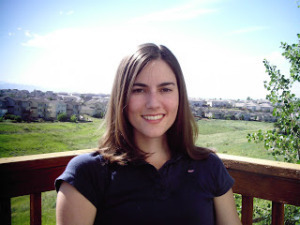 Katie O’Rourke was born and raised in New England, growing up along the seacoast of New Hampshire. She went to college in Massachusetts and graduated with a degree in gender and sexuality. She lives in Tucson, Arizona where she writes, loves, and is happy. Monsoon Season, her debut novel, was a bestselling e-book. Her second novel, A Long Thaw was released in 2014. You can find out more about Katie and her books on her website: Katie O’Rourke
Katie O’Rourke was born and raised in New England, growing up along the seacoast of New Hampshire. She went to college in Massachusetts and graduated with a degree in gender and sexuality. She lives in Tucson, Arizona where she writes, loves, and is happy. Monsoon Season, her debut novel, was a bestselling e-book. Her second novel, A Long Thaw was released in 2014. You can find out more about Katie and her books on her website: Katie O’Rourke
Here are links to articles referenced in Katie’s post:
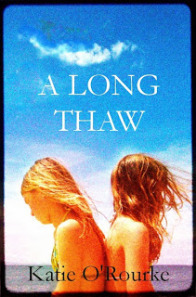 http://www.nytimes.com/2013/04/28/opinion/sunday/wikipedias-sexism-toward-female-novelists.html?_r=0
http://www.nytimes.com/2013/04/28/opinion/sunday/wikipedias-sexism-toward-female-novelists.html?_r=0
http://www.washingtonpost.com/wp-dyn/content/article/2010/04/20/AR2010042004354.html
http://www.theguardian.com/books/booksblog/2009/nov/11/dont-patronise-popular-fiction-women
www.vulture.com/2013/05/schulz-on-the-great-gatsby.html?test=true
http://www.salon.com/2013/06/05/rachel_kushners_ambitious_new_novel_scares_male_critics/


February 13, 2014
Guest Post: Why I Lead A Writer’s Group by Joanne Tailele
 A common question I’m asked is “Are you in a writer’s group?” I’m not, which is not the answer someone is usually seeking. Even though I’m part of a few groups online Backspace, Women’s Fiction Writers Association, and Writer Unboxed on Facebook, in addition to my treasured Book Pregnant tribe, and have in-real-life writer friends with whom I can drink wine, kvetch, eat chocolate, hang out on the beach talk about writing and publishing and share my work, I’m not part of a group that gathers in a meeting room for the express purpose of talking about or sharing writing on a regular basis.
A common question I’m asked is “Are you in a writer’s group?” I’m not, which is not the answer someone is usually seeking. Even though I’m part of a few groups online Backspace, Women’s Fiction Writers Association, and Writer Unboxed on Facebook, in addition to my treasured Book Pregnant tribe, and have in-real-life writer friends with whom I can drink wine, kvetch, eat chocolate, hang out on the beach talk about writing and publishing and share my work, I’m not part of a group that gathers in a meeting room for the express purpose of talking about or sharing writing on a regular basis.
So when Joanne Tailele offered to write a guest post for WFW on how and why she is the president of her local writer’s group, I knew that post was the perfect fit!
Are you part of a writer’s group? Give us the info in the comments! If it’s a group at maximum capacity, or only for urban fantasy writers who are over 5’5″ and live in Idaho, share a little about the group anyway. We’d love to know how and why it started and if it works!
Please welcome Joanne Tailele to Women’s Fiction Writers!
Amy xo
Why I Lead A Writer’s Group
by Joanne Tailele
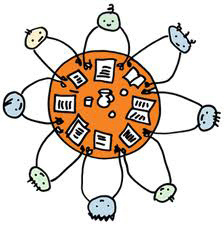 Writing can be a lonely profession. We hunker down in front of our computers with only our characters as friends. That is fine, but when we come up for air, we need the camaraderie of other writers to spur us along, to encourage us, and to share the ups and downs of writing with us.
Writing can be a lonely profession. We hunker down in front of our computers with only our characters as friends. That is fine, but when we come up for air, we need the camaraderie of other writers to spur us along, to encourage us, and to share the ups and downs of writing with us.
That is why I lead a local writers group called Marco Island Writers Inc.
I can’t take credit for creating the group. A wonderful lady by the name of Gwen DeCrow is the founder. First, her story.
In the spring of 2011, as Marco Island resident and writer Gwen DeCrow was writing her first book, she felt the need for some direction and encouragement from other experienced writers. Knowing that the island has a creative heartbeat, she decided to try to form a small group of writers.
Gwen distributed flyers to area businesses and the library and asked editors of local newspapers to include the information in their clubs and organizations listings announcing the formation of the monthly Marco Writers Networking Group.
With approval from the local library, a meeting room was reserved and two people attended the first monthly meeting.
More marketing of the group and word of mouth led to two different people attending the July 2011 meeting. In the meantime, the publicity was seen around town and Gwen started getting phone calls of interest and email contacts. She started an email distribution list notifying “members” of upcoming meetings and speakers.
On a rainy third meeting night in August 2011, nine people attended and extra chairs were gathered for the diverse, enthusiastic writers. A special guest speaker, a New York Bestselling author was scheduled for September in a larger room at the library and the group was on its way, with a request by members for a longer meeting time.
The October meeting was held at the group’s new home, a local bank’s community room. The group continued to grow to sixty members on the list and thirty attending monthly through “season” and the group held its two year anniversary in June 2013.
Next, is my story.
I joined Marco Writers in October 2011. As the group continued to grow, Gwen’s responsibilities at her day job made it impossible for her to continue as president. Another writer and I agreed to co-chair the group, starting on its anniversary in June. By now the contact list had grown to over eighty people.
Shortly into my tenure as co-chair, my partner also had to back out. Since then I have been the president of Marco Writers Inc.
Many things have happened and the group continues to grow.
We now take membership dues – $40 annual membership. This helps to pay some of our speakers and for supplies. We have a “first time FREE” policy so new writers can decide if this is something they are interested in. We also have the option for people to pay $10 at the door for repeat attendees that are not here year round and do not want an annual membership (We are a very seasonal island with a lot of snow birds.)
We became incorporated and are working toward getting our non-profit status
We are incorporating a college internship program and have received grant money through AAUW (American Association of University Women)
We have a thirty minute time period during each meeting for our members can network with each other. Many times, this continues out in the parking lot after the meeting. Our members don’t ever want to leave. LOL
Our local library has given us a display case to feature our local writers and promote our annual event.
With the “Friends of the Library”, we have initiated a writing contest for the public.
With a planning committee of six people, our meetings are scheduled a year in advance. We alternate speakers to include inspirational, education, technology, marketing etc. During our “off-season” months, our own members share their experiences in writing and publication.
Every other month, we do an exercise in “Flash Fiction” which is a huge hit.
The alternating months we offer a very brief technology tips class for those less technically inclined.
Using personal bios of our members, we match up writers for one-on-one feedback and critique of their WIP (Work in Progress). Note: We attempted to do this during the meetings, but discovered that the time allotted was not enough to give any valuable feedback to our writers.
Our big annual event is AuthorFest, which is an open to the public promoting our books to sell. Last year, in Feb. 2013, we had 30 participating authors and 200 attendees. This year’s event is March 8, and we have 40 local authors and expect attendance to exceed last year.
We have a website to promote our group and our books. http://www.marcoislandwriters.com
Monthly newsletters keep our readers (now 148 strong) abreast of what is happening with Marco Writers.
To say that we are busy is an understatement. This could be a full time job for me. It is a wonderful group of writers from many different skill levels and genres. We have writers that have only dreamed of writing and we have both traditional and self-published authors who are quite successful. The energy from networking with each other encourages us to keep moving forward in our careers. Our motto, “Writers Helping Writers” is true. We are in this together. I can vouch that without the encouragement and support of this group, I doubt I would have completed my second book, or would have continued to work on my third.
I have had the privilege to belong to three different writers groups: Writer’s Village University, Marco Island Writers Inc., and Women’s Fiction Writers Association. Each one brings something different to the writing table. My advice to new and seasoned writers alike, is to run, not walk, to a networking group of other writers, whether it be online or in person.
My second piece of advice it to ignore that negative little devil sitting on your shoulder that laughs at you and says, “Are you crazy? You can’t write. You’re terrible. This is nothing but crap.” That same little devil sits on every writer’s shoulder and he is a liar. Yes, we have a lot to learn. Yes, we are constantly improving. But, repeat after me, “I am a writer.”
Say it until you believe it.
Then tell the world.
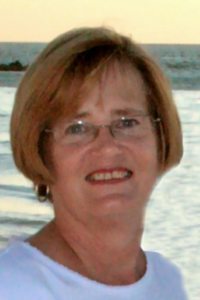
 Joanne Tailele
Joanne TailelePresident, Marco Island Writers
Author, Accident and Town Without Mercy
Website: http://www.joannetailele.com
Blog: http://joannetailele.wordpress.com
You can find out more about Joanne’s book here:
https://www.amazon.com/author/joannetailele


February 10, 2014
Guest Post: How And Why Award-Winning Author Ann Hite Turns Her Family’s Stories Into Books
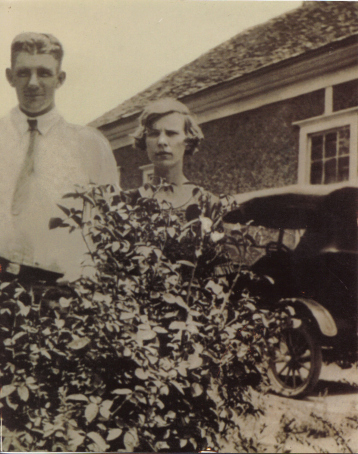
1925—Ann Hite’s grandmother and grandfather at ages 15 and 16
 It can be precarious to reveal family truths within fiction. So what a treat we have today at Women’s Fiction Writers! Author Ann Hite shares with us not only the fascinating stories from her family, but how and why, she took those stories and reimagined them for her books.
It can be precarious to reveal family truths within fiction. So what a treat we have today at Women’s Fiction Writers! Author Ann Hite shares with us not only the fascinating stories from her family, but how and why, she took those stories and reimagined them for her books.
Please welcome Ann Hite to Women’s Fiction Writers!
Amy xo
A Place I’ve Never Lived Before
by Ann Hite
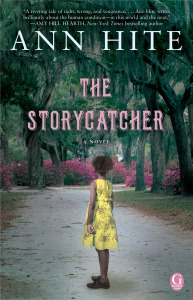 When I take that curvy part of Highway 40 between Asheville and Hickory, North Carolina, deep breathes come easily. The stiffness in my neck releases and relaxes. The ‘important’ issues in my life lose their power. The mighty spruces reaching for the sky quiet my racing thoughts. The land all around me belongs to me, beckons me. I’m home in a place I’ve never lived.
When I take that curvy part of Highway 40 between Asheville and Hickory, North Carolina, deep breathes come easily. The stiffness in my neck releases and relaxes. The ‘important’ issues in my life lose their power. The mighty spruces reaching for the sky quiet my racing thoughts. The land all around me belongs to me, beckons me. I’m home in a place I’ve never lived.
Granny, if she were alive today, would tell you she escaped Appalachia, walking, holding Mother’s small hand. It was 1935 and Granny was twenty-five, a widow, and grieving mother, who had just lost her two year old daughter, my aunt. Her small farm was taken from her. She felt she had nothing to lose. Her sheer determination landed her in Atlanta, a city she loved until she died in 1993. When World War II began, Granny went to work for Bell Bomber and built B-29s, a Rosie the Riveter. Out of each weekly pay check, she paid a house payment on her small house, so she would never be homeless again.
I came to live with Granny in early 1967 at the age of ten after living most of my grade school years in Germany. Granny’s house was smaller than the air force base housing and had no hall. In my mind, this meant that Granny was poor. A hall was essential to privacy. But Granny was the stabilizer in my chaotic childhood. She harnessed Mother’s crazy moods brought on by what we now call bi-polar. Granny gave my brother and I a safety net.
Each month, always on Sunday, my mother, brother, and me piled into Granny’s brand new baby blue Oldsmobile and rode into the mountains to visit my great aunts. These trips taught me to pay attention to detail, to my surroundings. From the backseat, I watched the busy streets turn into green fields and rolling hills. The further north we went the more something sharp stirred in my chest, an electric charge that spread down my arms.
My great aunts lived in a cluster of houses off a long lonely two lane road. Each house looked much the same: no underpinning, pillars built of field stones piled in such away they looked as if they’d topple over, Tar paper siding, and a wide front porch cluttered with chairs of all shapes and sizes. My Great Aunt Stella (pronounced Stellar) even had an old arm chair on hers. This always, always made Granny click her tongue and shake her head. Personally I loved the thought until I found out one of my great uncles–dead of course–came ever evening to sit in the chair and watch the sunset.
The great aunts gathered in the front room of Stella’s house on cold days. The wood burning stove glowed with heat. Mix-matched mugs of strong coffee were passed around to the adults. Kids got jelly glasses of chocolate milk. Always there was a cake made from scratch. We sat together, careful not to drop crumbs on the rose pattern rug. It was in this room I listened to the best ghost–or as my aunts called them, haint–stories and family legends. I learned it was Uncle Doogun who came each evening and sat in the old chair on the porch. He stayed until the gray light of night slid around the mountains into the holler. He died only a year before I came and Stella, his wife, still mourned him terribly.
Haints were very much a part of my life once I came to know my great aunts. These ghosts were as much a part of the large family as the cousins running in and out the doors in the summer. You never knew when a slamming screen door was a haint or a child. At the feet of my great aunts I learned to be a writer. The stories they told brought a tingling thrill walking up my backbone. I couldn’t get enough. In these storytelling afternoons, I watched Granny and Mother transform. Mother’s face would become younger, almost carefree. Granny shed her junior league white gloves and took off her heels. The first time I saw her take a dip of snuff offered by Aunt Stella my mouth dropped open. She gave me a look that could kill, a look warning what we did in Appalachia was not to be talked about after we left.
Granny always told the story of walking off the mountain and how she built a new life. The aunts and cousins would sit quiet, listening with awe if not envy.
Like most kids do, I became a teenager and outgrew the monthly visits to see my great aunts. Friends, a mother slowly losing her grip on sanity, and books swallowed my time. I grew into a woman who aspired to write. There was no encouragement from Granny. She saw my passion as a hobby. Real work involved receiving a lot of money that gave a woman security. But I wrote anyway. Wonderfully bland, grammatically correct, short stories that were actually published in many small literary journals. The great aunts died off one by one. Granny grew frail and became blind. Still I sat beside her, listening to her stories.
On the day of Granny’s funeral, she came to me, standing at the foot of my bed. Some would say my desperate grief made me invent her. Maybe. I’m not sure it even matters. This experience flung open a creative door, allowing me to tap into the storytelling that took place so many years before. The language filled my thoughts. Characters like Nellie Pritchard from Ghost On Black Mountain, my first novel, and Shelly Parker from The Storycatcher, my second. Were born.
Granny would never have approved of my novels. She was not partial to telling the family secrets, even if they were hidden in fiction. Her life in Appalachia was a source of pain, grief, and obligation. If not for the aunts, she wouldn’t have gone back. But those stories told on Sunday afternoons in the holler infected me, drove me to be a different kind of writer, one that embraced her history and celebrated her cultural folklore.
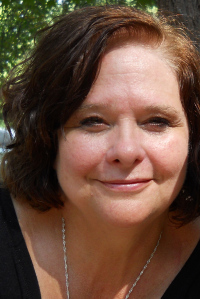 Ann Hite’s debut novel, Ghost On Black Mountain, not only became a Townsend Prize Finalist but won Georgia Author of the Year in 2012. Her personal essays and short stories have been published in numerous national anthologies. The Storycatcher, her second Black Mountain novel, is by Gallery Books, an imprint of Simon & Schuster. Lowcountry Spirit, an eBook novella, is available from Pocket Star, also an imprint of Simon & Schuster. Ann is an admitted book junkie with a library of over a thousand books. She lives in Smyrna, Georgia with her husband and daughter, where she allows her Appalachian characters to dictate their stories.
Ann Hite’s debut novel, Ghost On Black Mountain, not only became a Townsend Prize Finalist but won Georgia Author of the Year in 2012. Her personal essays and short stories have been published in numerous national anthologies. The Storycatcher, her second Black Mountain novel, is by Gallery Books, an imprint of Simon & Schuster. Lowcountry Spirit, an eBook novella, is available from Pocket Star, also an imprint of Simon & Schuster. Ann is an admitted book junkie with a library of over a thousand books. She lives in Smyrna, Georgia with her husband and daughter, where she allows her Appalachian characters to dictate their stories.
Website ~ Facebook ~ Twitter @annhite


February 5, 2014
Guest Post: Author Sharon Maas Flies (And Writes) By The Seat Of Her Pants. And It Works.
 As writers we’re often asked how we do what we do. Do we: free write, outline, summarize, dictate, timeline, chart—or do we pants. Pants? Yes. Pants. Do we write by the seat of our pants? Do we write without a roadmap? Everyone treads her (or his) own writing waters differently, and it’s always interesting and fun to find out how other writers do what they do. I do a little of each. I write outlines that I don’t always follow. I covet Post-It notes to remind me of ideas that might flee. I allow my work to wander, and use my guidelines to keep the story in check. Except when I don’t.
As writers we’re often asked how we do what we do. Do we: free write, outline, summarize, dictate, timeline, chart—or do we pants. Pants? Yes. Pants. Do we write by the seat of our pants? Do we write without a roadmap? Everyone treads her (or his) own writing waters differently, and it’s always interesting and fun to find out how other writers do what they do. I do a little of each. I write outlines that I don’t always follow. I covet Post-It notes to remind me of ideas that might flee. I allow my work to wander, and use my guidelines to keep the story in check. Except when I don’t. 
Today, we have author Sharon Maas sharing with us her writing journey which began in the 1970s in Guyana, and her writing style, which has wings. Share your journey and style in the comments.
Now, please welcome author Sharon Maas to Women’s Fiction Writers!
Amy xo
The Writing Journey: Flying By The Seat Of My Pants
By Sharon Maas
 I write my novels flying by the seat of my pants, without a plan or even an outline, not knowing where I’ll end up when I write that first word. I plunge blindly into the story with nothing more than a vague idea of a character, and go along wherever she takes me. I’m often surprised at the results.
I write my novels flying by the seat of my pants, without a plan or even an outline, not knowing where I’ll end up when I write that first word. I plunge blindly into the story with nothing more than a vague idea of a character, and go along wherever she takes me. I’m often surprised at the results.
Sounds like a recipe for chaos, but there’s a method to the madness, and I quite clearly learned the method back in 1971-72, when, as a very naïve 19-year-old, I left my home in Guyana and plunged into the heart of the Amazon for the adventure of my life. I had no plan, no goal, and very little money; I just knew I had to go. I certainly had no idea that I’d end up learning not only how to navigate South America flying by the seat of my pants, but a whole new approach to life and, several decades later, how to write a novel.
Parents of teenagers will be relieved to know I didn’t travel alone. Two friends, Margaret and her boyfriend Salvador, decided to come along with me when I left my journalist job at the Sunday Chronicle and crossed the Brazilian border, bound for Manaus.
A month later, there we stood on the Manaus dock on the river Amazon, waiting for a riverboat to take us further. But in which direction? East, to Belem, the Atlantic coast, and then south to Rio? Or west, deeper into the Amazon basin, to Leticia in Colombia at the point where three nations meet, and Iquitos, in Peru? We didn’t care; we’d take the first boat that would actually leave with us on board, instead of promising to leave the next day but stealing off in the night, without us. It took a few days, but in the end we left on the Evandro, towards Colombia.
And that was the motif for the whole year-long journey. We never knew where we’d end up. We’d meet people who’d invite us to stay a week, or run into others who’d give us an address in a village we’d never heard of; we zig-zagged across the continent, up the Amazon, across the Peruvian Andes, and up the west coast through Ecuador and Colombia.
Only once did we put down roots: in Ecuador we joined a commune of American hippie drop-outs high in the hills. There we lived for six months, growing vegetables, cooking over an open fire—and smoking grass smuggled over the Colombian border. And then we moved on, from here to there, taking life as it comes, day by day and never knowing where we’d end up.
It meant ceding control to where life would go, and to cede control we needed an almighty trust that somehow, it would be good, better even, than anything we could deliberately plan. And it was. It was almost as if there was already a plan in place; people we had to meet, places we had to see, and by letting go of our own plan of what we should do where, we allowed the real plan to kick in; we were following a blueprint greater than ourselves, a wonderful story in which we were the characters.
It turned into a voyage of discovery. We explored the continent—that is, the four countries we traversed, Brazil, Peru, Ecuador and Colombia—from the ground; we lived in native villages, learnt Spanish, and eventually, by trial and error, learnt to think like a native. We met the right people at the right times. Events fell into place. We learnt to let go, to let life take us where it wanted. We learnt to adapt and flow like water, to deal with obstacles and assholes as they came along. Most of all, we learnt about ourselves, discovered who we really were, deep down inside. It was glorious, magical. It was once-in-a-lifetime.
Fast-forward twenty-five years. Here’s me in my late forties, a stay-at-home mother by choice, with no particular desire to get back into the stress of working outside the home as a social worker. My husband earned enough for us all, and so our physical needs were cared for. Life was organised, planned out, as it should be. After all the struggles of the previous years—with my first child I’d been a single mother for several years, working part-time—I finally had the time to do something I had always yearned to do: write a novel. My second child was now four years old, in nursery school; I could get back to my true calling. What a glorious situation!
For I had always been a storyteller. When I was a child of eight or nine I used to scribble Enid-Blyton knock-offs, adventure stories featuring a bunch of children with dogs and horses who had great fun and loads of adventures catching dangerous criminals. I had always been a dreamer, easily caught up in wishful thinking, dreaming happy ends to some of the not-so-nice situations I found myself in—particularly romantic ones.
But could I write a whole novel? How even to begin? Some people might have advised me to start small, with short stories, but I always knew that wasn’t for me: I didn’t like reading short stories, and if I were to write anything then it had to be long.
But surely you needed a plan: to know all the characters and what they would do and how they would do it, and all that in advance. I was never any good at making plans. The idea of writing a novel seemed an impossible goal, a pipe dream, far beyond my limited capabilities. I read books on the technique of writing, books on how to hone one’s craft, how to create compelling characters; I learned about three-part-structure and foreshadowing and the perils of multiple viewpoint. But the more I read, the more paralysed I felt.
But then I stumbled across Dorothea Brande’s slim volume, Becoming a Writer. I read it in one sitting, and I knew it had been written for me alone. Here there was not a word about technique; it was all about discovering the writer’s magic. There is such a thing? There is! Said Dorothea, and the book was all about how to reveal it.
It is, she says, a voyage of discovery. The planning, conscious mind must take a back seat to the creative unconscious mind. This can actually be learnt.
The unconscious is shy, elusive and unwieldy, but it is possible to learn tot tap it at will, and even to direct it. The conscious mind is meddlesome, opinionated and arrogant, but it can be made subservient to the inborn talent through training.
And it all came back to me: the art of letting go, of trusting in life, or, in this case, trusting my own unconscious mind; letting it take charge, and following where it would take me.
A character came to me, a first sentence; I wrote it down, and the rest followed on from there. I flew by the seat of my pants. Just the way I’d travelled South America, one step at a time, one day at a time, one page at a time. It was as if the story was already written, and all I had to do was turn to it, deep inside me, to let it out.
After a few years practice on a first novel that found an agent but didn’t sell, I picked myself up and started again. A chaotic first draft was the result; there followed months of revision, during which I put into action all the good advice I’d learnt on writing craft.
That book was Of Marriageable Age.
It sold, at auction, to HarperCollins.
Now that I’m a veteran writer, participating in the international online writers’ community, I know that there’s a word for people like me: I’m a “pantser”. I also know that, more and more, writing this way is frowned upon: it’s a method, they (“they” being other veteran writers) say, for beginning writers or, at the other end of the spectrum, genius writers. Real writers—professionals—plan and plot, outline and structure; we don’t just follow each random story impulse, each imaginary detour. The controversy is illustrated perfectly in the blog post A Modest Proposal to Pantsers: Don’t and the subsequent comment trail. What the sceptics ignore, however, or don’t seem to even know, is that there’s a method to “pantsing”, a technique, a discipline, a skill; and we who work this way need to learn and develop that skill for ourselves.
I’ll tell you my own secrets in my next guest blog here on Women’s Fiction Writers: coming up in April.
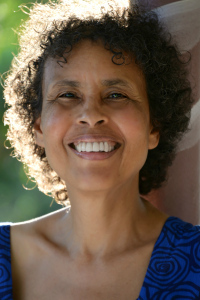 Sharon Maas was born in Georgetown, Guyana in 1951, and spent many childhood hours either curled up behind a novel or writing her own adventure stories. Sometimes she had adventures of her own, and found fifteen minutes of Guyanese fame for salvaging an old horse-drawn coach from a funeral parlor, fixing it up, painting it bright blue, and tearing around Georgetown with all her teenage friends. The coach ended up in a ditch, but thankfully neither teens nor horse were injured. Boarding school in England tamed her somewhat; but after a few years as a reporter with the Guyana Graphic in Georgetown she plunged off to discover South America by the seat of her pants. She ended up in a Colombian jail, but that’s a story for another day.
Sharon Maas was born in Georgetown, Guyana in 1951, and spent many childhood hours either curled up behind a novel or writing her own adventure stories. Sometimes she had adventures of her own, and found fifteen minutes of Guyanese fame for salvaging an old horse-drawn coach from a funeral parlor, fixing it up, painting it bright blue, and tearing around Georgetown with all her teenage friends. The coach ended up in a ditch, but thankfully neither teens nor horse were injured. Boarding school in England tamed her somewhat; but after a few years as a reporter with the Guyana Graphic in Georgetown she plunged off to discover South America by the seat of her pants. She ended up in a Colombian jail, but that’s a story for another day.
In 1973 she travelled overland to India via England, Turkey, Iran, Afghanistan and Pakistan. After almost two years in an Indian Ashram she moved to Germany, got an education, got a job, got married, had children, and settled down. She still lives in Germany after three and a half decades, but maintains close ties and great love for both India and Guyana; and, somewhat reluctantly, for England.
Her first novel, Of Marriageable Age, was published in 1999 by HarperCollins, and is set in India, Guyana and England. Two further novels, Peacocks Dancing and The Speech of Angels, followed.
Sharon will soon be entering the digital world with the e-publication of Of Marriageable Age through the British women’s fiction publisher, Bookouture. Find out more: www.sharonmaas.com


January 30, 2014
Debut Author Ariel Lawhon Researched And Outlined And Wrote Her First Novel
 I had the distinct pleasure of reading an early copy of THE WIFE, THE MAID, AND THE MISTRESS by our guest, Ariel Lawhon. But it wasn’t my first rodeo with Ariel! Ariel is the co-founder of She Reads! You know She Reads, right? It’s an online book club and they were kind enough (*mwah*) to feature my own debut novel THE GLASS WIVES last summer.
I had the distinct pleasure of reading an early copy of THE WIFE, THE MAID, AND THE MISTRESS by our guest, Ariel Lawhon. But it wasn’t my first rodeo with Ariel! Ariel is the co-founder of She Reads! You know She Reads, right? It’s an online book club and they were kind enough (*mwah*) to feature my own debut novel THE GLASS WIVES last summer.
It’s always fun to give back–and Ariel gives a platform to so many authors (as I hope I do). The best part? I loved this book. I enjoy historical fiction for it’s transportation properties–sitting right in my cozy reading chair I’m whisked off to a new time and place. In my pajamas! With coffee! I enjoy how the author mixes fact with fiction, and the fact that I don’t know which is which. And Ariel does it well! I was also impressed with the structure of the novel, because I tend to be somewhat linear when I write and think, so when an author deftly defies that convention, I’m impressed! I think you will be too.
Please welcome Ariel Lawhon to Women’s Fiction Writers!
Amy xo
Debut Author Ariel Lawhon Researched And Outlined And Wrote Her First Novel
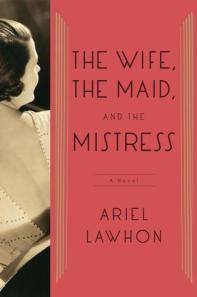 Amy: Ariel, congratulations on the launch of THE WIFE, THE MAID, AND THE MISTRESS! What’s the one thing that pops to mind now that you have a “real book” with your name on it?
Amy: Ariel, congratulations on the launch of THE WIFE, THE MAID, AND THE MISTRESS! What’s the one thing that pops to mind now that you have a “real book” with your name on it?
Ariel: Thank you! I am so excited. And honestly, the first thing that pops into my head is that I wish I could read the book. That sounds strange, I suppose, given that I know it better than anyone. But (as Margaret Atwood says) I’ve seen how the rabbit was smuggled into the hat. All those fun surprises and twists are ruined for me. We often write the book we’d like to read. But doing so actually robs us of that ability. It’s the most wonderful, bittersweet part of storytelling. We bring the book into the world but stay distanced from it.
But I am curious if this affliction is unique to me. Do other writers read their own work after it’s done?
Amy: You’ve written before about being drawn to the time period and the story of Justice Joseph Crater’s infamous disappearance in 1930. You bring together three women, who together, know the story of what happened to him (more or less, no spoilers from me). How did you decide which women these would be? Did you ever have another idea for the main characters?
Ariel: Stella Crater always had a prominent place in the story since her yearly ritual at Club Abbey inspired the novel. But in my first draft, the book was actually narrated by Jude, the lead investigator on the case who is married to the Crater’s maid. I knew I wanted the story to alternate between Stella’s last visit to Club Abbey and the events as they happened in 1930. However, it took me a long time, and several false starts, to realize that Jude was not the narrator. Once he moved into the background, Stella, Ritzi, and Maria became the clear choices and the story came together.
Amy: The novel covers different time periods and goes among them seamlessly. When you were writing, how did you accomplish this? Did you write it as we read it? Or did you write chronologically and then pull things apart and put them back together?
Ariel: I’m a huge fan of research and outlining. So before I wrote a word of the novel I sat down and laid the entire thing out scene by scene. And I pretty much wrote the book exactly as it’s read. However, when it came to revising I broke the book into parts. I edited the 1969 scenes together and did the same with Stella, Ritzi, and Maria’s scenes. That allowed me to stay consistent with voice and characterization.
Amy: You’ve been steeped in books and publishing with your website, She Reads. As a long-time “insider” did anything surprise you about having a book published? Or was everything as you expected it to be?
Ariel: I think it’s impossible to know what to expect with publishing, no matter how familiar you are with it. Because of my work with She Reads I’m very familiar with the mechanics of story and why readers respond to certain books. I know what book clubs are drawn to and how to reach them. I’m very comfortable working with publicists and am an avid proponent of novelists having a platform. But there’s so much that was new to me (copy edits!) and facets of publishing that I was only vaguely familiar with (marketing!) and nothing can prepare you for that vulnerable feeling of exposure leading up to the book launch.
Amy: Women’s fiction comes in lots of packages, and I’d definitely call your novel historical fiction and women’s fiction. What’s your take on the women’s fiction label? Does it bother you?
Ariel: Honestly? I’m of two minds on the subject. On one hand I spend very little time thinking about the labels attached to fiction (as a reader or a writer). If I’ve learned anything from She Reads over the last five years it’s that readers just want a great story—myself included. Liane Moriarty writes straight women’s fiction and she’s one of my absolute favorite writers. I’ll read anything she writes. I also adore George R.R. Martin and his wildly popular fantasy series GAME OF THRONES. Both writers have mastered the art of storytelling. Who cares what the genre is.
On the other hand there does seem to be a disclaimer attached to the label: for women only. It seems the distinction goes beyond genre and into something more biased. And that does bother me. Mystery. Science fiction. Literary. Young adult. Suspense. Horror. Western. Historical. Fantasy. None of those genres have a gender attached. But we do it with books written by women, about women. We don’t do it with music, why should we do it with books?
Amy: What’s your best advice for aspiring authors? Any tip or trick you’d like to share?
Ariel: The two hardest pieces of advice I know. First: write. There is no career without the writing. There is no book without the writing. There is no writer without the writing. Second: write the story that scares you most. The one you’ve been avoiding and that you’re certain you can’t pull off. Show up every day even though you’re terrified and write THAT book, holding nothing back.
Bonus advice: keep a box of tissues handy. You’re probably going to cry a lot. The work is hard and you’ll be riddled with self-doubt. You’ll spend a lot of time circling the story, frustrated, because it maters to you and you want to get it right. The beauty of writing the story that scares you is that it’s impossible to be half-hearted about it.
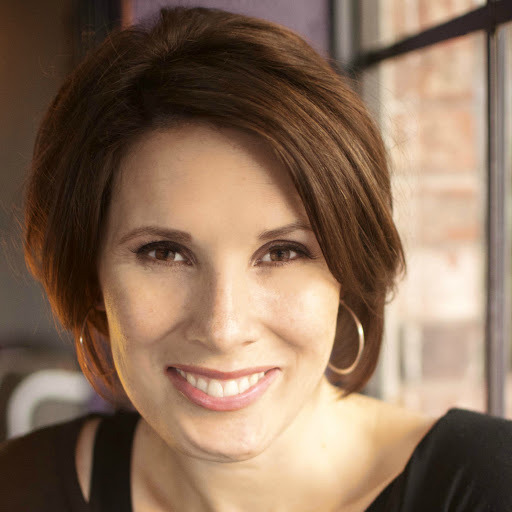 Ariel Lawhon is co-founder of the popular online book club, She Reads, a novelist, blogger, and life-long reader. She lives in the rolling hills outside Nashville, Tennessee with her husband and four young sons (aka The Wild Rumpus). Her novel, THE WIFE THE MAID AND THE MISTRESS is centered around the still-unsolved disappearance of New York State Supreme Court Judge, Joseph Crater. Ariel believes that Story is the shortest distance to the human heart.
Ariel Lawhon is co-founder of the popular online book club, She Reads, a novelist, blogger, and life-long reader. She lives in the rolling hills outside Nashville, Tennessee with her husband and four young sons (aka The Wild Rumpus). Her novel, THE WIFE THE MAID AND THE MISTRESS is centered around the still-unsolved disappearance of New York State Supreme Court Judge, Joseph Crater. Ariel believes that Story is the shortest distance to the human heart.


January 27, 2014
Guest Post: Debut Novelist Kathryn Craft On Women’s Fiction And Coming-Of-Age In Life And In Fiction
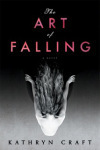 I love introducing debut novelists at Women’s Fiction Writers! Not only is Kathryn Craft a debut novelist, but she lives in Pennsylvania not far from where I grew up. Isn’t it always fun to find out that you have something extra in common with other writers and readers besides the love of books? Today, Kathryn shares with us her true life and fictional coming-of-age story. Both are different than you might expect, and will grab your attention!
I love introducing debut novelists at Women’s Fiction Writers! Not only is Kathryn Craft a debut novelist, but she lives in Pennsylvania not far from where I grew up. Isn’t it always fun to find out that you have something extra in common with other writers and readers besides the love of books? Today, Kathryn shares with us her true life and fictional coming-of-age story. Both are different than you might expect, and will grab your attention!
Please welcome Kathryn Craft to Women’s Fiction Writers!
Amy xo
Women’s Fiction and A Coming-Of-Age Tale
by Kathryn Craft
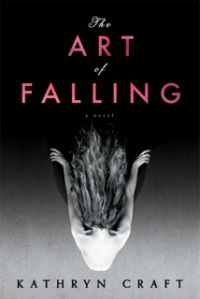 When I mention a “coming-of-age tale,” you might think of an aboriginal boy on a walkabout, or a teenage girl being introduced to polite society at her debut. Such events are considered rites of passage between childhood and adulthood.
When I mention a “coming-of-age tale,” you might think of an aboriginal boy on a walkabout, or a teenage girl being introduced to polite society at her debut. Such events are considered rites of passage between childhood and adulthood.
My passage was longer and hazier. I’m a late bloomer—I didn’t really come into a full definition of self until I was past the hormonal frenzy that was falling in love, reproducing, and pleasing my husband. I tinkered in my professional life—home renovator, dance teacher, dance critic, desktop publisher. In life as in story, in order for me to set a new course it took extreme pressure—the suicide of my first husband, when I was 41.
Only in his sudden, violent absence did I realize how far I had stretched my own definition of self to compensate for his increasing depression and alcoholism. Already a writer, I knew story could serve not only as the path to my healing, but as the rite of passage I’d been seeking for so long. Within three years of his death I latched onto the most fiercely passionate goal of my life: becoming a published novelist. The chance to leave behind a story with a more hopeful ending than my husband’s—for my two sons, my extended family, and our community—became my calling.
Many types of forces can hold a woman back from coming into a true sense of self. With the protagonist in my debut, The Art of Falling, it’s because she grew up in the insular and demanding world of dance.
Once her mother saw Penelope Sparrow’s natural talent and great love for movement, she arranged the early, specialized training Penny would need to make her mark in this competitive world. By the time her body betrayed her at the age of fourteen, with widening hips and sprouting breasts, she was already eight years into what she anticipated would be a lifelong endeavor.
Her bodily changes mortified her. Choreographers loved the prepubescent Penelope Sparrow, but had no use for the womanly lumps and bumps that would detract from the aesthetic line they sought—and Penny’s private war with her body began.
Our full engagement with life requires that we face the fears that hold us back. In creating a twenty-eight-year-old character with the potential to self-destruct, and then watching her claw her way back onto life’s stage after miraculously surviving what should have been a deadly fall, I faced my own fears about death and defined what I wanted the rest of my life to stand for.
Penny must face the unexpressed fears that caused her food issues and imploded her most important relationships. In story, as in life, the only way to get to the light at the end of the tunnel is to tolerate its darkness, seeking what small moments of beauty and grace and hope that can sustain you along the way.
My own life is an adult coming-of age tale: this is my debut. I am 57, and my first novel releases today. Penny and I suspect we’ll find other women out there who have fallen, and failed, yet still yearn for passage into their rightful place in life’s great story.
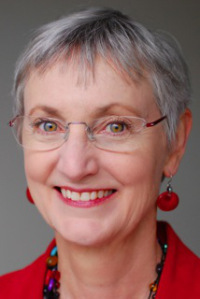 Kathryn Craft is the author of two novels from Sourcebooks: The Art of Falling (you can read an excerpt here) and While the Leaves Stood Still (due Spring 2015). Long a leader in the southeastern Pennsylvania writing scene, she speaks often about writing, and blogs at the Blood-Red Pencil and Writers in the Storm.
Kathryn Craft is the author of two novels from Sourcebooks: The Art of Falling (you can read an excerpt here) and While the Leaves Stood Still (due Spring 2015). Long a leader in the southeastern Pennsylvania writing scene, she speaks often about writing, and blogs at the Blood-Red Pencil and Writers in the Storm.
Connect with her at:


January 22, 2014
THE IN-BETWEEN HOUR by Barbara Claypole White: An Author Interview & A Book Giveaway
 Author Barbara Claypole White is not new to Women’s Fiction Writers or to many of you! She’s the author of THE UNFINISHED GARDEN and now, THE IN-BETWEEN HOUR. One of my favorite parts of being both an author and a book blogger is reading some books before everyone else. I hold them close, like well-kept secrets with an expiration date. I know I get to share, and when, but for a while they’re mine-all-mine! I read an ARC (advance reader copy) of THE IN-BETWEEN HOUR and loved it so much I wrote a blurb for the finished book. So you won’t be surprised that I loved it as both a reader and a writer. Barbara’s books traverse some dark areas, but she does so with such great care and respect for her characters that it’s a pleasure to read. Barbara’s powers of description (and they are powers) are remarkable, as she paints vivid pictures of her story for the reader to get lost in.
Author Barbara Claypole White is not new to Women’s Fiction Writers or to many of you! She’s the author of THE UNFINISHED GARDEN and now, THE IN-BETWEEN HOUR. One of my favorite parts of being both an author and a book blogger is reading some books before everyone else. I hold them close, like well-kept secrets with an expiration date. I know I get to share, and when, but for a while they’re mine-all-mine! I read an ARC (advance reader copy) of THE IN-BETWEEN HOUR and loved it so much I wrote a blurb for the finished book. So you won’t be surprised that I loved it as both a reader and a writer. Barbara’s books traverse some dark areas, but she does so with such great care and respect for her characters that it’s a pleasure to read. Barbara’s powers of description (and they are powers) are remarkable, as she paints vivid pictures of her story for the reader to get lost in.
My blurb of THE IN-BETWEEN HOUR: ”In THE IN-BETWEEN HOUR Barbara Claypole White’s elegant prose paints a vivid portrait of multi-generational families, unlikely friendships, crushing loss and binding love. THE IN-BETWEEN HOUR breaks your heart and mends it at the same time.”
Below, Barbara shares her personal journey to write this book, and some tidbits about her next one. And she offers advice on the benefits of failing.
One winner of a signed copy of THE IN-BETWEEN HOUR will be chosen at random next Wednesday. Just leave a comment about writing or reading or Barbara’s interview to be entered to win. If your email address isn’t part of your entry, either through a link or by adding it to the comment, and you don’t read the blog regularly by subscribing (GASP), we’ll have no way to let you know you’ve won. (Happens ALL THE TIME!) So — include your email!
Now—please welcome Barbara Claypole White to Women’s Fiction Writers!
Amy xo
Barbara Claypole White’s THE IN-BETWEEN HOUR Lets In The Light When It Comes To Love and Loss
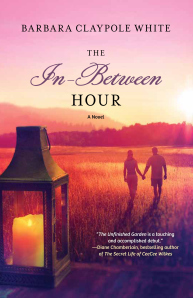 Amy: Barbara! I’ve been waiting and waiting for the release of THE IN-BETWEEN HOUR because I wanted the rest of the world to be able to read it. Congratulations on writing an eloquent and gripping story. Now, down to business. Who was the first character, or what was the first bit of TIH to reveal itself to you, or did the story hit you fully formed?
Amy: Barbara! I’ve been waiting and waiting for the release of THE IN-BETWEEN HOUR because I wanted the rest of the world to be able to read it. Congratulations on writing an eloquent and gripping story. Now, down to business. Who was the first character, or what was the first bit of TIH to reveal itself to you, or did the story hit you fully formed?
Barbara: Thank you, Amy, and thanks for having me back on the blog!
I really, really wish my stories walloped me fully formed, but I’m a messy, organic writer who weaves all over the place. My loosey-goosey process is riddled with false starts…and false drafts. THE IN-BETWEEN HOUR started as a ghost story with a dual timeline and a different heroine, and yet the premise has remained unchanged: What could be worse than losing your child? Having to pretend he’s still alive. And THE IN-BETWEEN HOUR has always been about the power of memories.
An older relative was stuck in a memory loop, calling us constantly to rant and rave about his retirement home while blaming us for putting him there. He called again and again and again, each time forgetting the previous call. After one particularly traumatic evening, I thought, “Life can’t get any worse.” Being a writer I realized it could, and I had two dark thoughts: What if something happened to our son and we had to constantly remind this relative? Or would we just pretend our son was still alive to protect this person from constantly reliving unbearable grief?
Those ideas led to Will Shepard and became his dilemma. I knew Will was a writer; I knew he’d lost a young son in horrific circumstances; I knew he was struggling with his aging father’s mashed-up memory. And I knew I would be telling his story.
I found Will through his intriguing description of silence. That description, which opens the novel, gave me clues to his personality: the love of rock climbing that made me wonder if he had Native American ancestry, and the strong connection to the North Carolina forest, which he tries so hard to deny.
Amy: You write wonderful characters who are fractured in one way or another. What’s the appeal of these characters to you (or to your readers)?
Barbara: I’ve always been drawn to broken people—in real life and in fiction. I like gloriously complex, quirky people who manage to overcome emotional and mental conflict that could, so easily, cripple them. To me, that takes true courage. And if they manage to help others while battling their own demons? Well, that’s a slam dunk.
Much of what I write comes back to my favorite themes—that people who need each other find each other and that you can discover your real family in an unexpected place at an unexpected moment in your life. I can trace both back to my favorite story as a child: the parable of the Good Samaritan. To help a friend is one thing, but to reach out a hand to someone you don’t know? That fills me with the warm fuzzies of hope.
Amy: What was your favorite scene to write in TIH? (No spoilers, of course)
Barbara: My absolute favorite scene comes with too many spoilers, but I do love the first scene with Jacob, Will’s 80-year-old dad who has a penchant for the illicit Wild Turkey he sneaks into Hawk’s Ridge Retirement Community. Jacob has a southern cadence that’s hard for a Brit to reproduce, but I worked and reworked that scene until I could hear him quite clearly. From then on, I had Jacob’s voice. I love Jacob. He’s the heartbeat of the novel and has his own, unique way of interpreting the world despite his short-term memory dysfunction.
In this scene, we go inside Jacob’s head for the first time and see the story seed take root. Jacob has just ended a phone call with Will. During that phone call, Jacob erased the memory of his grandson’s death, and Will, in a moment of grief and exhaustion, tried to protect Jacob by spinning a story. Will pretended his son was traveling around Europe, assuming Jacob would forget. But Jacob, who has never left the state of North Carolina, latches onto My Grandson’s Great European Adventure, and soon Will finds himself trapped in a lie.
Amy: Did it feel different to launch TIH than it did to launch The Unfinished Garden last year?
Barbara: Very different! I’ve learned to expect nothing, be pleasantly surprised when good things happen, and not check my Amazon rankings. The killer deadline for novel three also helped. (Writing to contract is a fabulous cure for book launch neurosis!) Plus I was blessed to discover—before launch day—that the novel had been chosen as a SIBA Winter 2014 Okra Pick. THE IN-BETWEEN HOUR is my love letter to the little corner of the South where I live: the Orange County forest. Going into the launch with the knowledge that I had the support of Southern indie booksellers made a huge difference to my psyche. It’s like shouting out, “The Oscar’s mine and you can’t take it away even if you trash my red carpet gown.”
Amy: Your novels have remarkably lush settings. You’re an avid gardener. No coincidence, I imagine. Can you tell us another tidbit of your real world you’ve written into your novels?
Barbara: We live in the middle of the forest that provides the setting for THE IN-BETWEEN HOUR and the opening and closing scenes from THE UNFINISHED GARDEN. In both novels, my heroines share my love of this land. Tilly’s garden is my garden, and Hannah’s relationship to the forest is completely autobiographical. Hannah talks about living breathing history on Saponi Mountain, history that is tangible. I grew up in an English village with a church that celebrated its thousandth birthday when I was a teenager. I walk into that building; I sense the past. I have the same feeling when I enter our forest.
And I’m obsessed with how the light filters through the trees. Yes, my fascination with light and shade comes from being a woodland gardener, but it also comes from my need to find hope in darkness, to find what Leonard Cohen describes as the light that gets through the cracks. My brilliant son has battled obsessive-compulsive disorder for most of his life. We’ve visited hell together, but we’ve always come out the other side—into the sunlight.
Amy: What’s your best advice for any writer embarking on a brand new project?
Barbara: Give yourself permission to fail. I had a horrible time finding a new story after THE IN-BETWEEN HOUR and then abandoned what I thought was going to be my next project. A different story premise spoke to me, with characters I loved, and that stalled out, too. Following my editor’s brilliant advice, I approached the second story from a different angle and as I did so, finally began to feel a connection—after five months.
You don’t have to know where you’re going but you need the commitment to find out. Show up for work every day, even if it feels like wading through quicksand. And then, without warning, the wading will get easier and you’ll experience that first jolt of passion. Commitment and passion can lead to a wonderful story…
Amy: Okay, I’ll come clean. I asked that because I know you’ve started on your third novel. Anything you can share with us about it—like when it will be published, so we can mark our reading calendars?
Barbara: We have a tentative release date of June 2015. I’m still working on the first draft, so it’s one huge, glorious mess. I am intrigued, however, to realize that unlike THE UNFINISHED GARDEN and THE IN-BETWEEN HOUR this is not a story of healing. Novel three is a story of acceptance. It’s about what happens when a full-time mother becomes chronically disabled and her emotionally removed, workaholic husband must figure out how to connect with their son—a teenager who is juggling first love, college applications, and a soup of issues that includes Tourette syndrome. Oh, and there’s an elderly, lesbian neighbor called Eudora. Eudora owns a gun, and she’s a squirrel sniper. 
(Ooh, Barbara, I can’t wait!! If you live in the U.S., don’t forget to leave a comment below to be entered to win a copy of THE IN-BETWEEN HOUR!)
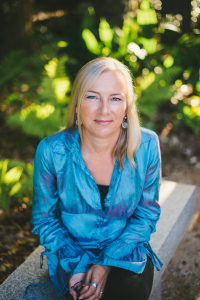 English born and educated, Barbara Claypole White writes and gardens in the forests of North Carolina. Her husband is an internationally-acclaimed academic; their son is an award-winning young poet / musician. His battles with obsessive-compulsive disorder (OCD) have inspired her to write stories that find healing and hope in the darkness of invisible disabilities such as severe grief or clinical depression. Her characters are quirky and damaged, but they always find the light through the trees (a recurring image in her writing). The Unfinished Garden, Barbara’s debut novel, won the 2013 Golden Quill for Best First Book. The In-Between Hour, her second novel, has been named a Winter 2014 Okra Pick by Southern Indie Bookstores.
English born and educated, Barbara Claypole White writes and gardens in the forests of North Carolina. Her husband is an internationally-acclaimed academic; their son is an award-winning young poet / musician. His battles with obsessive-compulsive disorder (OCD) have inspired her to write stories that find healing and hope in the darkness of invisible disabilities such as severe grief or clinical depression. Her characters are quirky and damaged, but they always find the light through the trees (a recurring image in her writing). The Unfinished Garden, Barbara’s debut novel, won the 2013 Golden Quill for Best First Book. The In-Between Hour, her second novel, has been named a Winter 2014 Okra Pick by Southern Indie Bookstores.
Connect with Barbara on her website , Facebook, or Twitter @bclaypolewhite.


January 8, 2014
Celebrating The Paperback Release of Jennifer Cody Epstein’s THE GODS OF HEAVENLY PUNISHMENT
 Today we’re celebrating the paperback launch of THE GODS OF HEAVENLY PUNISHMENT by Jennifer Cody Epstein. You may remember Jennifer’s last visit to Women’s Fiction Writers when she shared with us a heartfelt post on mothering, writing, and moving forward. You can read it here. Today she tells us the different ways she writes her novels, as well as why she balks at the term women’s fiction. I totally get the reasoning, and the cool thing is, we each get to interpret for ourselves what we write and what we read and how we describe it. You know, tomaTO or toMAto, it all tastes good on a sandwich.
Today we’re celebrating the paperback launch of THE GODS OF HEAVENLY PUNISHMENT by Jennifer Cody Epstein. You may remember Jennifer’s last visit to Women’s Fiction Writers when she shared with us a heartfelt post on mothering, writing, and moving forward. You can read it here. Today she tells us the different ways she writes her novels, as well as why she balks at the term women’s fiction. I totally get the reasoning, and the cool thing is, we each get to interpret for ourselves what we write and what we read and how we describe it. You know, tomaTO or toMAto, it all tastes good on a sandwich.
Please welcome Jennifer Cody Epstein back to WFW!
Amy xo
Jennifer Cody Epstein Talks About Writing Novels, Her Favorite Scenes, And Why She Steers Clear Of The Term “Women’s Fiction”
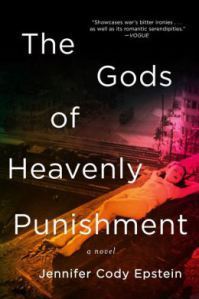 Amy: Congratulations on the paperback release of THE GODS OF HEAVENLY PUNISHMENT. How is this different for you than the hardcover release of the novel?
Amy: Congratulations on the paperback release of THE GODS OF HEAVENLY PUNISHMENT. How is this different for you than the hardcover release of the novel?
Jennifer Cody Epstein: I think mainly it’s that I’m excited for the book to be more accessible to a broader spectrum of people. A hardcover is lovely on a bookcase, but it’s either too expensive or too clunky for most readers to want to invest nearly $30 in. Plus, book groups tend to buy paperbacks and I love to talk to them about Gods—so I’m hoping I’ll get more opportunities to do that now!
I’m also thrilled with the cover for the new book—it’s a photograph by Japanese photographer Hayashi Tadehiko that I’d lobbied hard for because I love it so much. I think it sums up so much of what the book is really about for me.
Amy: Is there one particular thought or idea or lesson you hope readers take away when they’ve read THE GODS OF HEAVENLY PUNISHMENT?
Jennifer: For me, it’s sort of encapsulated in the reaction of one of the book’s characters, Billy Reynolds, upon returning to Tokyo (where he’d grown up) and seeing it after the bombing: “The filth and illness and rubble were neither part of an action nor a consequence; neither a crime nor a punishment. It was simply what it was: a charred expanse of loss and nothingness. An end.”
In other words, I hope people will take away the thought that war—any war—has so many facets beyond “winners” and “losers.” The damage wrought individuals and nations of both sides is incalculable and—in so many cases—irreversible. Which should, of course, seem self-evident—but I think that point can get lost, particularly when dealing with a conflict like World War II, which has traditionally been seen in fairly simple terms and described by words like “just” and “necessary.”
Amy: I can’t believe I’m asking this because it always stopped me in my tracks—but it’s fun to know! Do you have a favorite scene or moment in the novel? What makes it your favorite?
Jennifer: My favorite scene to write was the one where Hana Kobayashi—the glamorous, tragic femme fatale of the novel—seduces the very dry and self-righteous Anton Reynolds over lunch at the Imperial Hotel. I had a lot of fun figuring out ways to make him increasingly befuddled and hot-under-the-collar.
Amy: Everyone (okay, many people) seem to want to know how an author writes a book. Do you outline or just write and figure things out as you go? Any tips or tricks you’d share?
Jennifer: As a rule I do outline, but (also as a rule) I then ignore those outlines. Or rather, follow them up to a point—but if the narrative seems to want to go in a different direction (which it almost always does) I let it…and end up rewriting my outline to fit that new direction. And then, of course, promptly veer from that outline…etcetera, etcetera. I don’t know if that’s a tip so much as a cautionary tale (!) But the bottom line for me is that outlines are useful in as much as they make us feel as though we have a master plan, which makes writing a little less daunting as a task. So I’d encourage people to make them if they feel like they help—but to also not be afraid to tear them up and start over again if they are becoming more of a hindrance.
That said, for the novel I’m currently working on I’ve been experimenting with something called “The Snowflake Method” of “designing” a novel, which entails exploring and fleshing out your storyline and your characters in phases before you sit down to do the actual writing. So far I’m finding it pretty useful in getting a better grip on my ideas. You can find one version of it here: http://www.advancedfictionwriting.com/articles/snowflake-method/
Amy: Do you cringe at the mention of the term “women’s fiction” or does it not bother you? What is it that you think of when you hear it?
Jennifer: I actually do kind of cringe—not out of any disrespect for women readers (quite the opposite, since we are the prime consumer base for the whole industry) but because much like the adjective “historical,” “women’s” in the popular imagination tends to connote work that is somehow less “serious” or literary, and that’s definitely something I object to, on so many levels. For one thing, in my experience women are just as serious and “literary” as are men, and I count as many male authors among my literary influences—Vladimir Nabakov, Haruki Murakami, David Mitchell—as I do female. If not more! And I’m certainly not a women’s fiction “reader.” Why, then, would I want to be seen as someone who only or mainly writes as a woman, for women? I likewise doubt that most male writers would want to be seen as writing exclusively for men–especially since men buy so little fiction, relatively speaking.
Amy: What’s your best advice for aspiring authors who want to write a book about a strong woman, her journey, and her choices (that’s what I’d call women’s fiction)?
Jennifer: I applaud your definition! The main advice I’d give is to allow your character complexity and depth. Being “strong” doesn’t necessarily mean being infallible—or even appealing all the time. In fact, in my opinion it’s far more interesting to read about characters battling their own weaknesses and flaws than to paint them as Amazonian success stories from the get-go. I discovered this with my first novel, The Painter from Shanghai, which was based on the extraordinary life of Chinese prostitute-turned-post-Impressionist Pan Yuliang, who ended up being a celebrated painter in Paris. She was a woman who triumphed over such enormous odds—poverty, the loss of her parents, sexual slavery, the rampant prejudices against both women and Western art in pre-revolutionary China. But she didn’t survive them by being likable all the time—and if I’d tried to make her so I wouldn’t have been doing justice to her or her amazing story (which is why when people tell me they didn’t really “like” her at some points in the narrative, I take it as a compliment).
So create your strong woman—give her all the traits you’d like to see in yourself, but give her some real shortcomings (maybe even your own shortcomings?) as well. In the end it will make her a much more real and empathetic character—and hence that much more resounding for your readers–men and women alike.
 Jennifer Cody Epstein is the author of The Gods of Heavenly Punishment and the international bestseller The Painter from Shanghai. She has degrees from Amherst College, the Johns Hopkins School of Advanced International Studies and Columbia University. She has worked in Hong Kong, Tokyo, Bangkok and New York, writing for The Wall Street Journal, The Asian Wall Street Journal, Self, Mademoiselle and NBC. She currently lives in Brooklyn, NY with her husband, two daughters and an exceptionally needy Springer Spaniel.
Jennifer Cody Epstein is the author of The Gods of Heavenly Punishment and the international bestseller The Painter from Shanghai. She has degrees from Amherst College, the Johns Hopkins School of Advanced International Studies and Columbia University. She has worked in Hong Kong, Tokyo, Bangkok and New York, writing for The Wall Street Journal, The Asian Wall Street Journal, Self, Mademoiselle and NBC. She currently lives in Brooklyn, NY with her husband, two daughters and an exceptionally needy Springer Spaniel.
website: jennifercodyepstein.com
facebook: https://www.facebook.com/JenniferCodyEpstein
twitter: @JennCodyEpstein


Women's Fiction Writers
- Amy Sue Nathan's profile
- 543 followers


